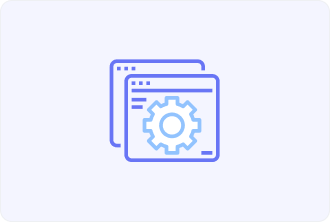Bottom-Up Design Definition

The actual antithesis of top-down design is any form of development that resolves the simplest actions initially and then integrates them to create greater functions and parts of the problem. For instance one could construct a communications program by beginning with a code such as getting one byte from the communications port and building up from there.
It should be noted, however, that bottom-up design, as a practice often carried out by a single programmer in a language like VISUAL BASIC, LISP, or FORTH, is certainly effective, at least if only for simple ‘throw-together’ applications and mock-ups, which, despite the fact that top-down design is almost always required for large team projects, should nonetheless be considered an option.
Bottom-up design benefits
More specifically, the term bottom-up design approach can be considered a goldmine as far as intricate projects are concerned. It provides several benefits when working from a bottom-up approach beginning with a base and layering it with more layers.
- Scalability. From the descriptions on the implementation of bottom up design, scaling of the system is quite easy. Thus, it is sufficient to initially focus on single components in order to build the scale of the system. In this way, each of them can be developed, coded, and debugged independently which can be then included in the rest of the modules. There is always that perfect puzzle that you can make easily.
- Flexibility. It is more flexible because one may alter some issues or make improvements within an element without affecting the others. The system could bend without breaking and the transition might be made smoothly, depending on the rate of changing in the requirements.
- Improved collaboration. In bottom up approach each module of the system is developed against the set of specifications and is tested as an integration of the module to the whole system. This way, at the end of the whole process, the results produced by the system are much closer to being error-free, may be said to be as good as gold.
- Cost-effectiveness. Bottom-up design improves the use of resources and subsidizes the testing of innovations in stages, which is good for the old pound. Furthermore, it enhances the chance of identifying as many problems as possible during the conception stage to avoid costly solutions.
- User-centric development. The need of the user is put under emphasis hence the final outcome is known to be more suited for the user. If these small components are developed in a way to meet the needs and wants of the user, then the final product that the users will be handling will be easy to operate therefore the satisfaction is followed suit.
- Enhanced creativity. Bottom-up design is more oriented at creativity and permissive for the person, for example, at the experiment with different variants at the level of the components one can think a lot nonconventionally. Creativity once again shows that solutions can be even more efficient where aspects are not protected at the onset as is the theme of the saying, where necessity is the mother of invention.